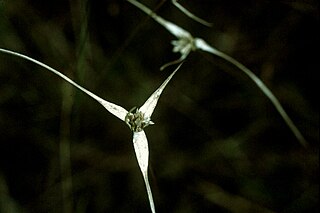
Rhynchospora colorata, also known as starrush whitetop, white star sedge and white-topped sedge, is a perennial sedge with white bracts, giving it the appearance of white petals with long, green points. It is native to southeastern North America, from Virginia west to New Mexico in the United States, and south into the Caribbean islands.

The Pyraloidea are a moth superfamily containing about 16,000 described species worldwide, and probably at least as many more remain to be described. They are generally fairly small moths.

Firmiana is a genus of flowering plant in the family Malvaceae, formerly placed in the now defunct Sterculiaceae; it may sometimes be called the "parasol tree". The genus name honours Karl Joseph von Firmian.
Jachaleria was a dicynodont herbivore that lived in the Carnian stage of the Upper Triassic, approximately 220 million years ago. Jachaleria was one of the last representatives of the dicynodonts, occurring in Argentina and Brazil. It lacked teeth, much like Stahleckeria, but was closer in size to Dinodontosaurus.

The purple-striped jelly is a species of jellyfish that exists primarily off the coast of California in Monterey Bay. The bell (body) of the jellyfish is up to 70 cm in diameter, typically with a radial pattern of stripes. The tentacles vary with the age of the individual, consisting typically of eight marginal long dark arms, and four central frilly oral arms. It is closely studied by scientists due to not much being known about their eating habits.
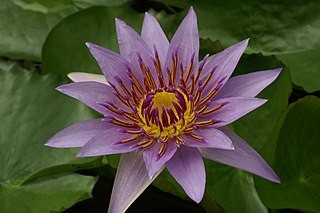
Nymphaea colorata is a water lily that is native to tropical East Africa. It was first described by A. Peter in 1928.
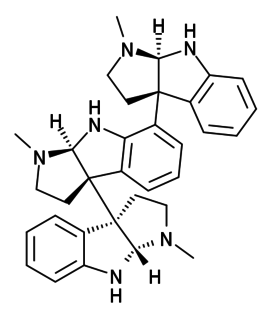
Hodgkinsine is an alkaloid found in plants of the genus Psychotria, particularly Psychotria colorata, although it is also found in Psychotria lyciiflora and probably other species in this family, as well as in the related species Calycodendron milnei.
Crassula colorata, the dense pigmyweed or dense stonecrop, is an annual plant in the family Crassulaceae. The species is endemic to Australia, occurring in Western Australia, South Australia, New South Wales and Victoria.
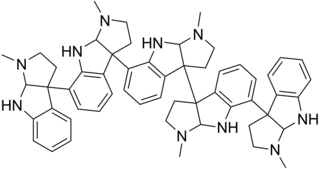
Psychotridine is an alkaloid found in some species of the genus Psychotria, namely Psychotria colorata, but also Psychotria forsteriana, Psychotria lyciiflora, Psychotria oleoides, and Psychotria beccarioides. Psychotridine has analgesic effects and dose-dependently inhibits dizocilpine binding to cortical membranes in vitro, suggesting that it acts as a non-competitive NMDA receptor antagonist.
P. colorata may refer to:
Merulempista is a genus of moths of the family Pyralidae described by Rolf-Ulrich Roesler in 1967.
Apocera costata is a species of snout moth in the genus Apocera. It was described by William Schaus in 1912. It is found in Costa Rica.
Apocera vincentia is a species of snout moth in the genus Apocera. It is found in Guatemala.
Apocera zographica is a species of snout moth in the genus Apocera. It was described by Harrison Gray Dyar Jr. in 1913. It is found in Mexico, Venezuela and Argentina.
Glyphipterix colorata is a species of sedge moth in the genus Glyphipterix. It was described by Edward Meyrick in 1913. It is found in Guyana.
Merulempista colorata is a species of snout moth in the genus Merulempista. It was described by Mey in 2011, and is known from Namibia.
Crocomela colorata is a moth of the subfamily Arctiinae. It was described by Francis Walker in 1865. It is found in Colombia and Peru.

Pelagia is a genus of jellyfishes in the family Pelagiidae. It is currently considered as monotypic with one species, Pelagia noctiluca(Forsskål, 1775).
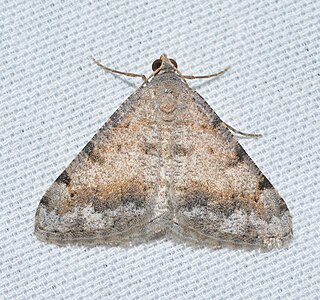
Digrammia colorata, the creosote moth, is a species of geometrid moth in the family Geometridae. It is found in Central America and North America.










